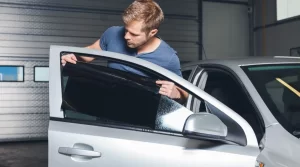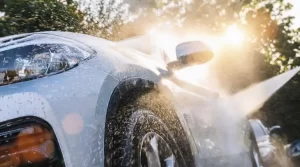It might be really frustrating to have a single paint or coat scratch on your brand-new car. It thwarts your plans to keep it in pristine shape for a long time. Nonetheless, every car owner experiences this at some point. The good news is that paint protection films with self-healing capabilities can help you lessen the harm. Yet, what are they and how do they operate?
In this article, we aim to dispel several myths about self-healing paint protection films. You will be a more knowledgeable shopper once you have finished reading.
WHAT IS A PAINT PROTECTION FILM THAT “SELF-HEALS”?
The damaged area of your car’s paint can self-heal thanks to self-healing paint protection films. You no longer need to take your car to a shop for every small flaw as a result.
Several layers make up a self-healing protective film. These films are made from polyester, adhesives, a transparent layer, and polyurethane. A technique called microreplication is used to join them to create a self-healing paint protection coating.
These protection coatings shield your automobile from fading and stains in addition to responding to heat during repairs.
A “SELF-HEALING” PAINT PROTECTION FILM’S WORK: HOW?
A paint protection film’s self-healing capabilities depend on heat. You might believe that your car’s surface blemishes are removed by a paint protection film. Yet, the protective layers don’t function in this way. Each part of the self-healing paint protection film has a specific function. For instance, polyurethane offers a robust coating that is scratch-and impact-resistant. It has a 6 mm thick.
The protective film can adhere to your car’s surface firmly thanks to the adhesive. It also makes provision for its removal without causing any harm to the car. Around 1.6 mm thick, the acrylic adhesive. The clear coat’s job is to prevent the film from fading or accumulating stains. In addition, it avoids yellowing, a problem that many poor-quality films frequently have. It has a 0.5 mm thick clear coat layer.
Moreover, a 3 mm release liner is included with the self-healing paint protection film. The protective film may be removed more easily with this one. This protective covering can be scraped, and the harm is obvious. Apply heat using a heat gun to the damaged region to encourage the layers beneath to realign, which will cause the scratches to disappear.
Hot water can be used in place of a heat gun. As an alternative, you might leave your car in the sun so that the protective layer can absorb the heat and heal itself. You get the impression that the protective film is self-healing as you watch the scratches on the surface of your car disappear.
The film’s ability to maintain its integrity while being scratched repeatedly is what makes this intriguing. The film can still fix damage to your car’s surface even if it happens in the same spot. But there is a warning. If the same location on your car is scratched repeatedly, the damage will eventually last forever. This is unlikely to occur, though, unless you deliberately do it.
WHY SELF-HEALING PAINT PROTECTION FILM IS BENEFICIAL
The following are just a few advantages of using self-healing paint protection film on your car.
- maintains the value of your car for future sales
- reduces the cost of painting repairs
- demonstrates amazing paint protection
PROFESSIONAL OR DIY PPF INSTALLATION
You can decide to do it yourself when installing a paint protection film on your car. On YouTube, there are numerous tutorials showing how to accomplish it. Keep in mind that the length of time it serves you depends on how properly you install it. Because of this, authorities advise against DIY.
AND WHAT DO TRAINED INSTALLERS DO DIFFERENTLY?
High-quality kits are available from professionals and are necessary for a job well done. You might not have these tools. Additionally, they have the skills necessary to fix any mistakes made along the way. For instance, applying the PPF incorrectly often results in bubbles. It can be difficult to get rid of them.
Professionals typically apply the PPF more quickly, whereas you could spend an entire day attempting to do the same. You might then leave the car looking unkempt and unprotected.
UPDATING PAINT PROTECTION FILM
You must take good care of the self-healing paint protection film if you want it to last. Since the film simply serves to prevent scratches on your car’s paintwork and does not otherwise clean it, start by cleaning it. Make sure you never longer wash your automobile outside in the sun. Moreover, avoid using an automated car wash.
Remove any chemicals or bird droppings as soon as they appear on the surface of your car. If they don’t, the coating can get harmed.
To keep it appearing clean and shining, wax your car at least once every month. In addition, the coating won’t be harmed in any way.
A FEW MORE RULES TO NOTE
Wait seven days after applying the PPF to your car before beginning to wash it. Avoid spraying water onto the PPF’s borders directly. Otherwise, the edges will lift and the protective properties would be compromised.
Check to see if your car’s surface is damp before wiping it. When it is dry, doing so could harm the coating.
When washing an automobile, stay away from applying harsh chemicals on the surface. Take the car to a professional if you are having trouble cleaning it of any filth.
Do you wish to protect the paint on your brand-new car? You’re better off adding a self-healing protective layer. To ensure that the PPF serves you for more than 10 years, choose qualified specialists to complete the task for you.
We have a group of experts who have been assisting car owners like you to safeguard their automobiles. Be aware that we only work with the best materials available. Contact us right away if you live near the Bronx.







